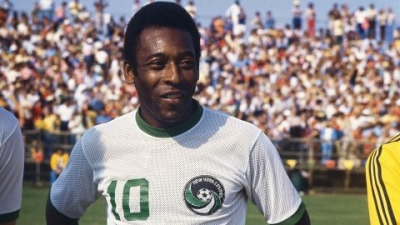
Pelé joined the New York Cosmos in 1975 and played his last official game in 1977.
Bettmann Archive/Getty Images
CNN
—
He’d won three World Cups, scored goals galore and become a global icon, but Pelé wasn’t quite done yet, so off he went to the US and helped transform the sport of soccer in North America.
The Brazilian great was convinced to come out of retirement, signing in 1975 for the New York Cosmos for three more seasons.
Pelé had seemingly played his last professional game months prior to joining the North American Soccer League (NASL) side, hanging up his boots after making 638 appearances for his childhood club Santos.
It was almost unfathomable that Pelé would ever play for any other club apart from Santos, but he joined the Cosmos midway through the 1975 season on a $1.67-million-a-year contract, despite soccer struggling to generate much interest in North America at the time.
Pelé came, saw and conquered and by the time ‘O Rei’ (“The King”) left in 1977, he was an NASL champion who had helped spark a soccer boom.
“During three seasons with the Cosmos, Pelé helped transform the domestic landscape of the sport of soccer,” the Cosmos said in a statement after his death this week.
“Where once there had been baseball diamonds, now there were also soccer pitches.
“The Cosmos and their King not only started a sporting revolution in America, they also traveled the world to spread the Gospel of the Beautiful Game.”
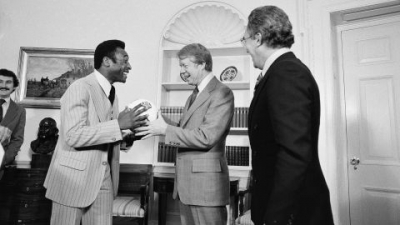
The Brazilian speaks to then US President Jimmy Carter at the White House in 1977.
Peter Bregg/AP
Pelé paved the way
Even now, after almost 50 years, Pelé’s influence is still being felt across both the men’s and women’s games in North America.
His move to Cosmos paved the way for other greats, such as Giorgio Chinaglia and Franz Beckenbauer, to follow suit and although the NASL ultimately folded in 1984, it set a blueprint for Major League Soccer (MLS) when it was established in 1993.
Superstars such as David Beckham, Gareth Bale, Thierry Henry and Zlatan Ibrahimovic have all followed in the footsteps of Pelé by helping grow the sport in North America by playing in the MLS.
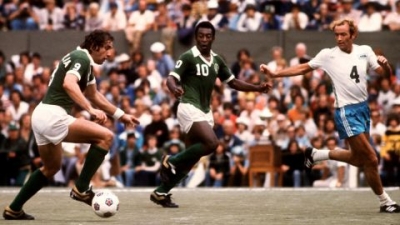
Pelé opened the door for more superstars to play in the US.
Peter Robinson/EMPICS/PA Images/Getty Images
Soccer in the US is now thriving, with the US National Men’s Team impressing during the Qatar 2022 World Cup.
Scouts from across the world are now looking at North America to discover new talent, with the sport cemented into the fabric of society and being naturally passed down through generations.
Much of the early work was done in the 1970s thanks to Pelé’s natural ability and infectious smile.
CNN’s Don Riddell spoke with supporters about Pelé during Qatar 2022, with one American saying the legend changed his life.
“Watching him was the first professional game I ever saw in 1975 and because of that, one of the reasons this is my 11th World Cup,” Clifton Broumand told CNN.
“Watching him and his ability hooked me to coming and watching soccer and the World Cup.”
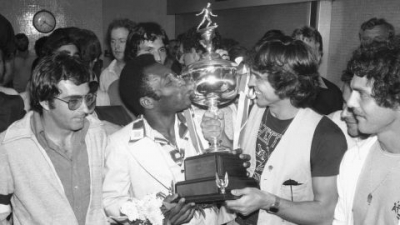
Pelé lifts the NACL trophy after winning the title in his last season in the US.
AP
In the season before Pelé joined Santos in 1975, the Cosmos’ largest attendance for a match was a little over 8,000 people.
During his final and most successful season in 1977, the average crowd was 42,689 for home games, including three occasions when the attendance was over 70,000, according to the Society for American Soccer History.
When Pelé joined the Cosmos he was aged 34 and he went on to score a total of 37 goals in 64 NASL matches.
“Pelé’s decision to bring his artistry to the United States with the New York Cosmos in the 1970s was a transformative moment for the sport in this country,” MLS Commissioner Don Garber said in a statement.
“As Pelé captivated fans throughout the US and Canada, it demonstrated the power of the game and the limitless possibilities for the sport.”
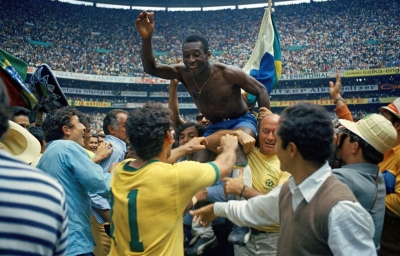
Pelé is carried off the field by fans after Brazil defeated Italy in the final of the 1970 World Cup.
Alessandro Sabattini/Getty Images
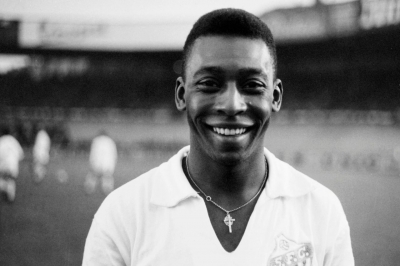
Pelé was born Edson Arantes do Nascimento on October 23, 1940. His parents named him after inventor Thomas Edison. He got the nickname Pelé when he was a young boy and had trouble pronouncing the name of his favorite player, a goalkeeper named Bilé who played with his father at a local club.
AFP/Getty Images
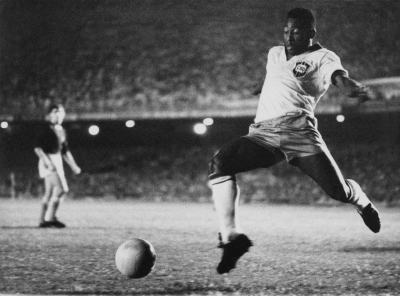
Pelé was just 16 years old when he made his debut for Brazil’s national team. It was less than a year after he started playing professionally with Brazilian club Santos in 1956.
Pictorial Parade/Archive Photos/Getty Images
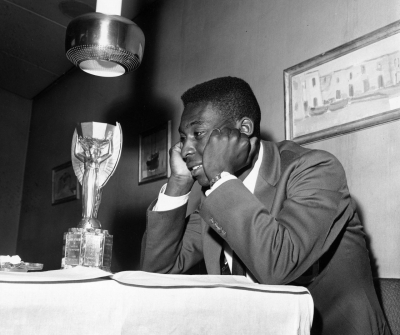
Pelé admires the Jules Rimet Trophy, the prize for winning the World Cup, circa 1958.
Popperfoto/Getty Images
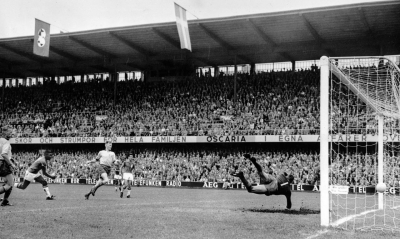
Pelé scores Brazil’s third goal during the 1958 World Cup final against Sweden. Brazil won 5-2 to claim its first-ever World Cup. “When we won the World Cup, everybody knew about Brazil,” he told CNN’s Don Riddell many years later. “I think this was the most important thing I gave to my country because we were well known after that World Cup.”
AP
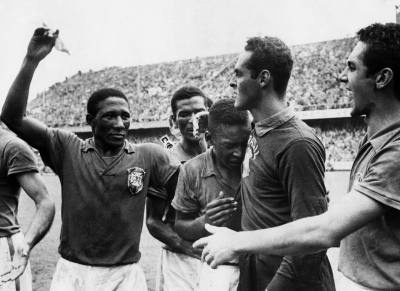
Pelé cries on Brazilian teammate Gilmar after winning the World Cup in 1958. In addition to scoring twice in the final, Pelé scored a hat trick in the semifinal win against France. He also scored the team’s lone goal in the quarterfinal win over Wales.
Keystone-France/Gamma-Rapho/Getty Images
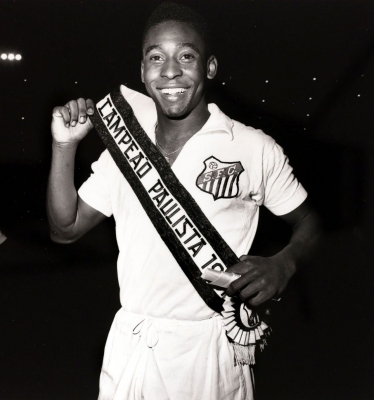
Pelé wears a sash after Santos became São Paulo state champions in 1961. Pelé played for the club from 1956-1974, scoring 618 goals and winning six Brazilian league titles. In 1962 and 1963, Santos won the Copa Libertadores, which is South America’s premier club competition.
Popperfoto/Getty Images
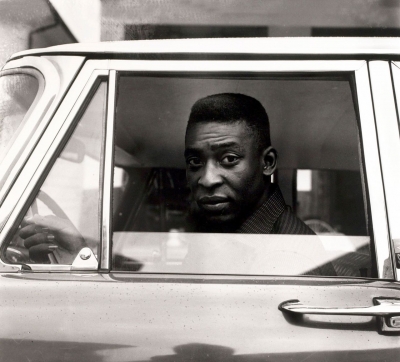
Pelé sits behind the wheel of his car in 1961. He grew up poor in Bauru, Brazil, and honed his craft playing barefoot with improvised balls made of coconuts or balls of socks.
Popperfoto/Getty Images
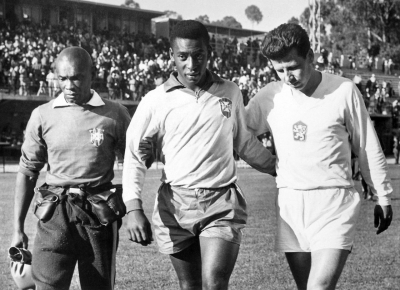
Pelé returned to the World Cup with Brazil in 1962 and starred in the team’s opening win over Mexico. But he was injured in the second match against Czechoslovakia and would miss the rest of the tournament. Brazil still defended its crown.
AP
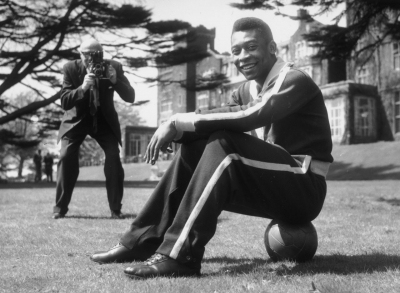
Pelé sits on a ball during a break in training in 1963. The Brazilian national team was in London to play a match against England.
John Pratt/Hulton Archive/Keystone/Getty Images
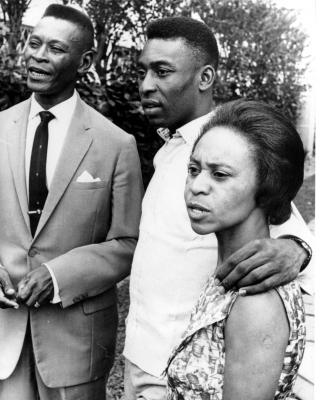
Pelé is seen with his parents, Dondinho and Celeste, in 1965. Dondinho was a soccer player himself and taught his son how to play.
AP Photo
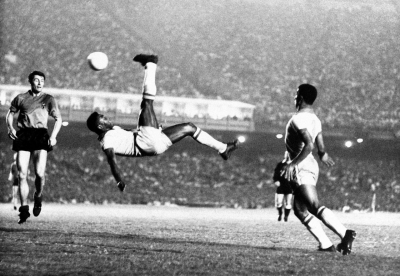
Pelé performs an overhead kick during a match in 1965. Dutch soccer star Johan Cruyff once said Pelé “was the only footballer who surpassed the boundaries of logic.”
AP
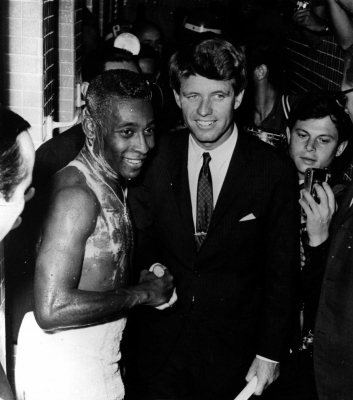
A soapy Pelé shakes hands with US Sen. Robert F. Kennedy after a match in Rio de Janeiro in 1965.
Allsport/Hulton Archive/Getty Images
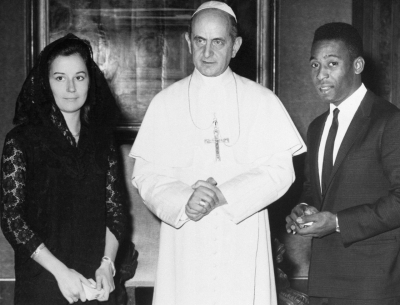
Pelé and his first wife, Rosemeri, meet Pope Paul VI while visiting the Vatican in 1966. The newlywed couple had been honeymooning in Germany, Austria and Italy.
AP
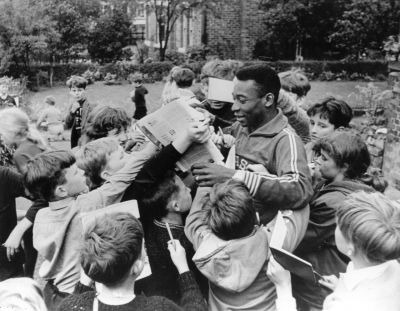
Pelé signs autographs for children in 1966. He played in the 1966 World Cup with Brazil but the team didn’t advance out of the group stage that year.
Central Press/Hulton Archive/Getty Images
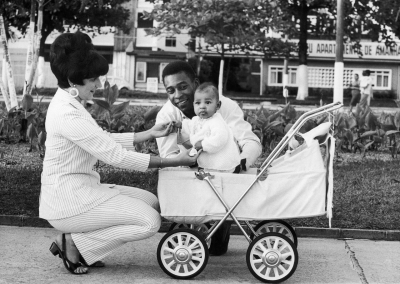
Pelé and his wife, Rosemeri, take their young daughter, Kely, out for a walk in 1967. It was their first child together. They would have three children in all before divorcing in 1978.
AP
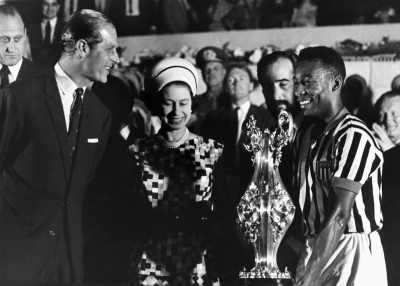
Britain’s Queen Elizabeth II, accompanied by her husband, Prince Philip, award a trophy to Pelé after watching a match in Rio de Janeiro in 1968.
AP Photo
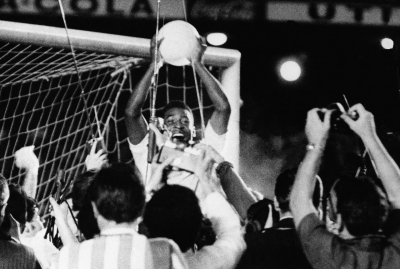
Pelé celebrates with fans after scoring his 1,000th career goal in 1969.
AP
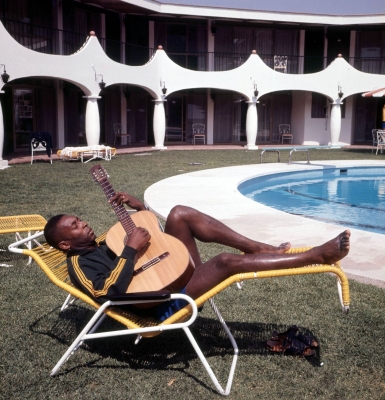
Pelé relaxes by a hotel swimming pool while in Mexico for the 1970 World Cup.
Popperfoto/Getty Images
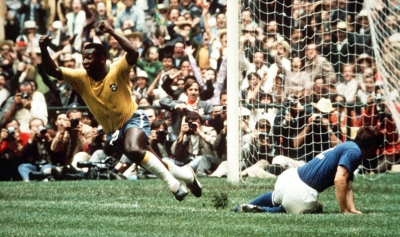
Pelé celebrates after scoring the first goal for Brazil in the 1970 World Cup final against Italy. The Brazilians won 4-1. “Before the match, I told myself that Pelé was just flesh and bones like the rest of us,” Italian defender Tarcisio Burgnich said after the match. “Later, I realized I’d been wrong.”
Colorsport/Shutterstock
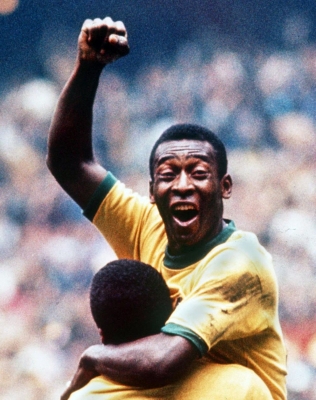
Pelé celebrates with Jairzinho after winning the World Cup final in 1970. The Brazilians won all six matches at the tournament, and that team is considered by many to be one of the best of all time.
Colorsport/Shutterstock
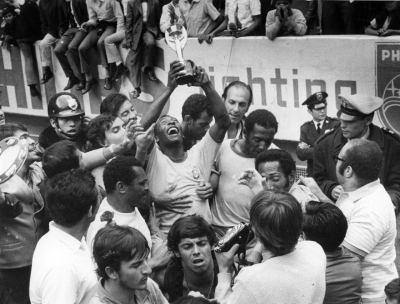
Pelé raises the Jules Rimet Trophy after winning the 1970 World Cup. Brazil was able to permanently keep that trophy for winning its third title, and a new World Cup trophy was introduced in 1974.
Horstmüller/ullstein bild/Getty Images
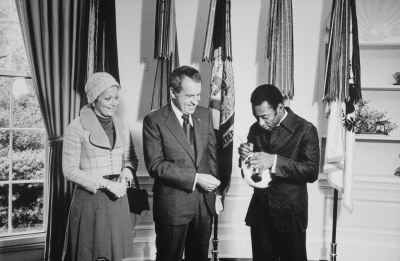
Pelé signs a soccer ball for US President Richard Nixon while visiting the White House with his wife, Rosemeri, in 1973. Pelé met several US presidents during his life. His celebrity status brought this famous quip from Ronald Reagan in 1986: “My name is Ronald Reagan, I’m the President of the United States of America. But you don’t need to introduce yourself, because everyone knows who Pelé is.”
Everett/Shutterstock
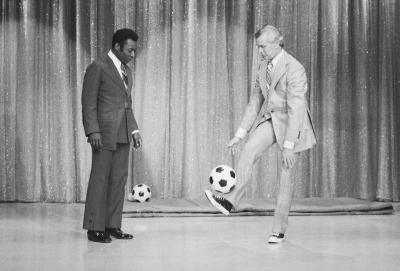
Late-night television host Johnny Carson gets some pointers from Pelé in 1973.
Bettmann Archive/Getty Images
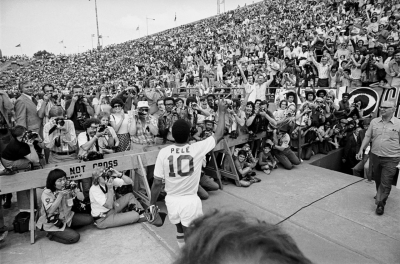
Pelé waves to the crowd before making his debut with the New York Cosmos in 1975. He signed a $1.4 million a year contract with the Cosmos and made a big splash in the emerging league.
Peter Robinson/EMPICS/Getty Images
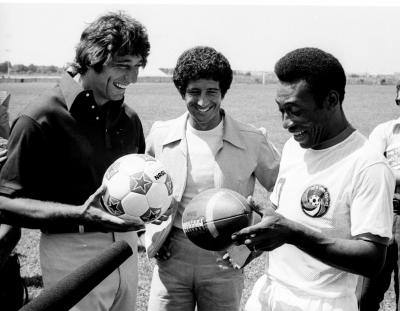
American football star Joe Namath, left, exchanges balls with Pelé during a promotional event in New York in 1975.
Ron Galella/Ron Galella Collection/Getty Images
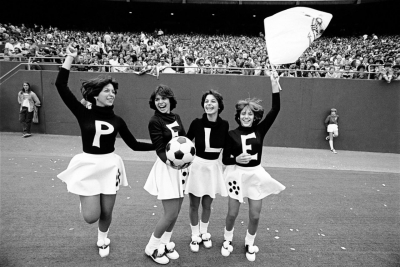
Cheerleaders wait to welcome Pelé onto the field during a Cosmos match in 1977.
Peter Robinson/EMPICS/Getty Images
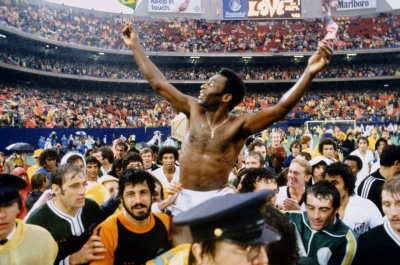
Pelé holds Brazilian and American flags after his final match in 1977. It was an exhibition at Giants Stadium between the Cosmos and his longtime Brazilian club, Santos. He played the first half for the Cosmos and the second half for Santos.
Peter Robinson/EMPICS/Getty Images
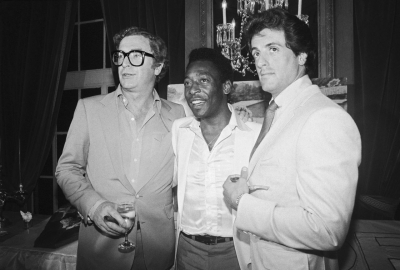
Pelé attends a party with actors Michael Caine, left, and Sylvester Stallone. The three starred together in the 1981 film “Escape to Victory.”
Bettmann Archive/Getty Images
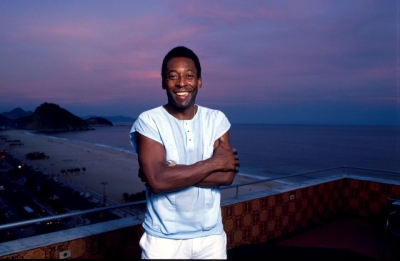
Pelé poses for a photo in Rio de Janeiro in 1991.
Paulo Fridman/Corbis/Getty Images
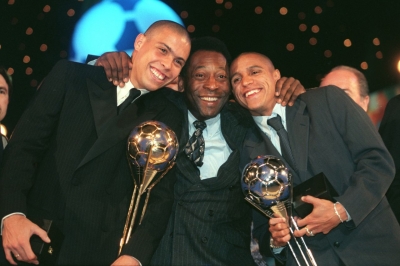
Pelé embraces two Brazilian stars — Ronaldo, left, and Roberto Carlos — after they finished first and second, respectively, for the 1997 FIFA World Player of the Year Award.
Matthew Ashton/EMPICS/Getty Images
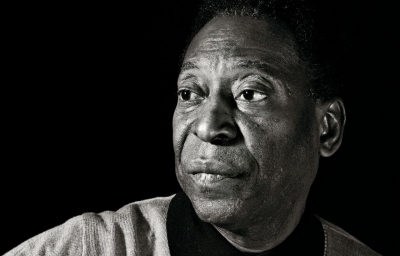
Pelé poses for a portrait in 2006. In his later years, Pelé was an outspoken political voice who championed the poor in Brazil. He served as a UNICEF Goodwill Ambassador for many years, promoting peace and support for vulnerable children.
Tom Jenkins/Getty Images
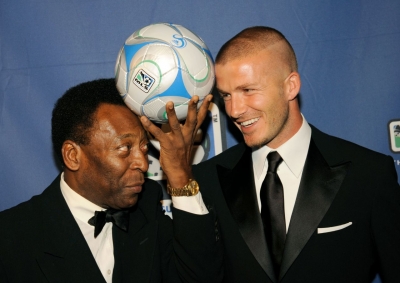
Pelé and English soccer star David Beckham attend a gala benefit celebrating soccer in the United States in 2008.
Shawn Ehlers/WireImage/Getty Images
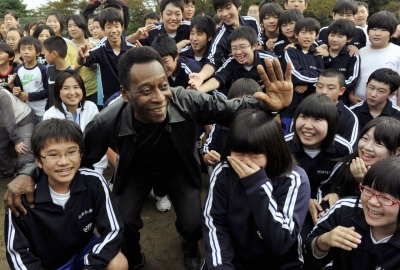
Pelé poses with children in Natori, Japan, in 2011, following an earthquake and tsunami in the region. He was there to help promote the 2014 World Cup, which took place in Brazil.
Kyodo News Stills via Getty Images
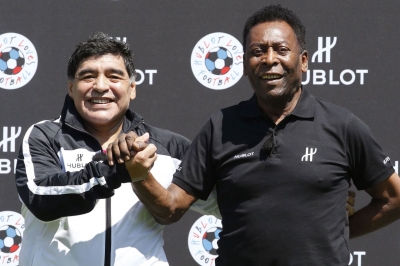
Pelé and Argentine soccer great Diego Maradona pose for a photo together in 2016. The two shared FIFA’s Player of the Century award in 2000. After Maradona’s death in 2020, Pelé paid tribute to his “dear friend” on Instagram: “One day, I hope, we will play soccer together in the sky.”
Patrick Kovarik/AFP/Getty Images
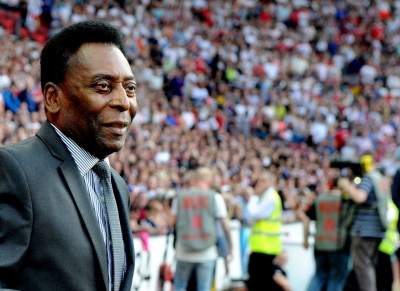
Pelé attends a charity match in Manchester, England, in 2016.
Shirlaine Forrest/WireImage/Getty Images
Pelé's life in pictures
Prev
Next
Beacon of light
The Cosmos’ first General Manager Clive Toye played a key role in getting the sport’s then biggest superstar to join the Cosmos.
A former journalist who was heavily involved in the NASL’s creation, Toye had a vision for the future of soccer in the US and believed Pelé was the man to make that dream a reality.
However, Toye and the Cosmos faced some stiff opposition from around the world for Pelé’s signature.
Heavyweight political intervention was even brought to bear, with Pelé saying then US Secretary of State Henry Kissinger had helped convince him to join the Cosmos.
“At that time, I had a lot of proposals to play in England, Italy, Spain, Mexico but I said no. After 18 years, I want to rest because I’m going to retire,” Pelé told CNN in 2011.
“Then appeared the proposal to go to New York because they want to make soccer big in the United States. That was the reason. I started my mission.”
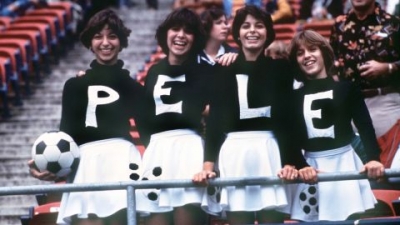
Pelé attracted new fans to the sport during his time in New York.
Colorsport/Shutterstock
Suddenly it was cool to watch soccer.
Matches were broadcast globally and the star-studded Cosmos team was the hottest ticket in town. The Comsos and Pelé even began touring around the world.
“No matter where we went, all around the world, Asia, Australia, Europe, all they wanted was Pelé,” former Cosmos player Dennis Tueart, who was signed to replace Pelé, though he played some exhibition matches with the Brazilian star, told Sky Sports.
“He had extraordinary vision, extraordinary athleticism […] he was without doubt, in my view, the best.”
Pelé still has a presence in New York City today. The ‘Pelé Soccer’ store was opened in 2019 and sits on the iconic Times Square, a location many fans flocked to after news of his death.
After the Cosmos won the NASL title in 1977, a farewell match against Pelé’s former team Santos was organized, with the Brazilian playing a half for both sides in what would be his final official game.
After the testimonial, he addressed more than 70,000 people inside a packed New York’s Giants Stadium, leading the crowd in a chant of “Love, love, love.”
A fitting end, perhaps, for a man who spread joy wherever he went and who helped establish soccer as a way of life in North America.
